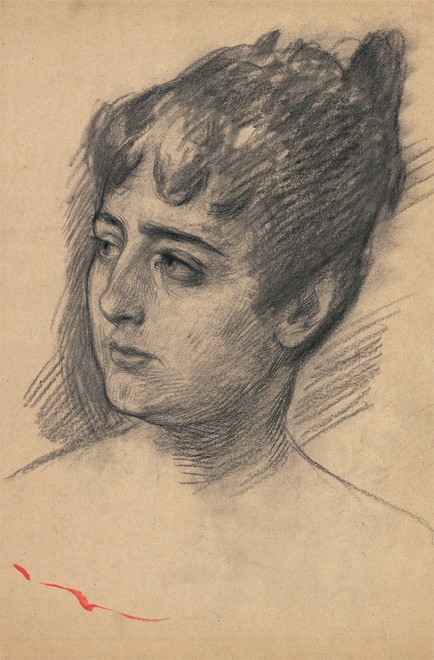Mose' Bianchi
(Monza, 1840 - Monza, 1904)
Portrait of Giulia Lucini Colombani
Black chalk and black charcoal on paper
426 x 284 mm (167.72 x 111.81 inches)
Mose' Bianchi
(Monza, 1840 - Monza, 1904)
Portrait of Giulia Lucini Colombani
Black chalk and black charcoal on paper
426 x 284 mm (167.72 x 111.81 inches)
Re: 0163
Provenance: Bernasconi, Mendrizio, Switzerland
Price: € 2.500,00 - circa US $ 2.725,00
Description:An elderly gentlewoman is portrayed in a three-quarter view while gazing deeply towards left. The vague profile, besides the face's depiction, enhances the expression's depth and the human warmth of this amazing snap by the painter.
The drawing's subject is Giulia Lucini, widow Colombani: belonging to an aristocratic family from Brianza, in the northwest of Lombardy, yet later moving in Milan at the beginning of the Nineteenth Century (her grandfather Erasmo used to work for the public administration during the Austrian Restauration , her cousins Achille and Marco were elected at the Chamber of deputies under the Minghetti's government), as her ancestors she financially supported Milan's Ospedale Maggiore. On her death she donated through testamentary bequest part of her possessions to the Hospital that on the 3rd of January 1894 commissioned from Mos� Bianchi a large commemorative portrait of her in order to cherish her memory .
The large canvas, still conserved nowadays in IRCCS Foundation's Collection, was preceded by several preparatory studies, as normal practice for a work of art of such remarkable commitment. Amongst these, quite close to our drawing is a painting already on the market, belonging to the painter�s heirs . By considering in succession the various preparatory stages of this portrait, it is possible to understand what was the artist's way of proceeding on the realisation of a piece of work: he used to begin with sheets as ours where he defined the most important passages of the composition; then he moved on studies on medium dimension canvases, at first of the single passages, then of the whole composition. Finally he made the painting, with a freshness that concealed the long designing work. Mos� Bianchi was born in Monza in 1840. After having entered the Brera Academy at a young age, he remarkably preferred Giuseppe Bertini's school instead of the most famous one of Hayez. Having a talent for a breezy composition intelligence since his fist pieces of work � just think of the amazing Communion of saint Luigi Gonzaga of the parish of Sant'Albino in Monza that earned him the first public award of the Academy - he took advantage from his stays in Venice and Paris and mostly from getting in contact with Mariano Fortuny's way of painting. His style is an ideal transition between the paintings of Lombardy's tradition and new stimuli that would lead in our country as well to the Art Nouveau shapes and to the creation of an imaginerie of the end of the century.
It is not a coincidence that for the Portrait of Giulia Lucini the name of Giovanni Boldini is implicated various times; he doubtlessly is spokesman for completely new formal needs compared with Bianchi, yet he found in the Lombard master a precursor of his nervous dynamism, of his taste for a snap that could gather a strong emotional impression of the subject .
Our drawing can boast a famous origin: it was conserved in the precious Bernasconi collection in Mendrisio, Switzerland. In fact, Bianchi was a close friend of Giovanni, founder of the Ticino dynasty and of the leather manufacturing company, as well as of his first-born Alfonso . In the collection there were more than 150 paintings on panel and canvas made by the painter, along with countless drawings. Some of the most famous paintings by Bianchi of the '80s and '90s, from the Cucina brianzola to the Lavandaie and the Vespero sul naviglio, works of arts made in 1894 just as our drawing, used to decorate the walls of 'Villa Foresta', before entering Milan's Modern Art Gallery collections.

